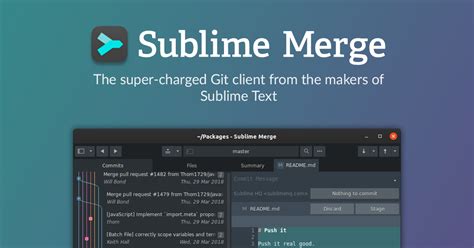In the ever-evolving landscape of development tools, Sublime Merge has garnered quite a bit of attention. Designed by the same creators behind Sublime Text, this Git GUI tool aims to provide a seamless and intuitive experience for developers managing their repositories. With its snappy performance and sleek interface, it has certainly caught the eye of many. However, competition is fierce, and opinions about its utility and pricing vary significantly among users, as evidenced by numerous online discussions.
The strong visual organization and spatial arrangement of information in Sublime Merge are some of the main draws for users who favor graphical interfaces over command-line interactions. This visual approach can be a game-changer, especially for those who find it difficult to keep track of numerous Git commands. However, concerns about its pricing structure remain a significant barrier for some. While many users argue that the $100 price tag is justified given its features and performance, others find it hard to justify the cost when there are free alternatives like lazygit and Fork.
Interestingly, the debate often extends beyond just cost to include the nuances of user experience and functionality. For instance, some users pointed out potential ambiguities in command execution within Sublime Merge. Though the team behind the tool claims to have aligned their nomenclature with git commands and added tooltips for clarity, the issue of occasionally not knowing which commands are being executed remains a point of contention. For developers who need precise and predictable outcomes, this can be a stumbling block.
Moreover, the market for Git tools is saturated with alternatives. From the open-source and highly customizable lazygit to the platform-integrated capabilities of VSCode, there are numerous options that cater to various needs. Git-Fork has also gained traction for its smooth performance on Windows and macOS, despite its lack of Linux support. Such competition makes it crucial for Sublime Merge to continuously evolve and address user feedback, especially the criticisms about UI quirks and update frequencies.
Despite these challenges, Sublime Merge continues to be valued for its specific strengths. Its robust handling of complex merges, particularly three-way merges, sets it apart in some respects. Users have also noted its efficient staging interface and the ability to manage multiple repositories simultaneously as major advantages. The tool’s ability to give users a close approximation to CLI commands while providing a GUI interface that is both fast and visually appealing cannot be understated. Overall, while not without its drawbacks, Sublime Merge still holds a respected place among Git GUIs, especially for those who seek a balance between visual ease and command-line power.


Leave a Reply